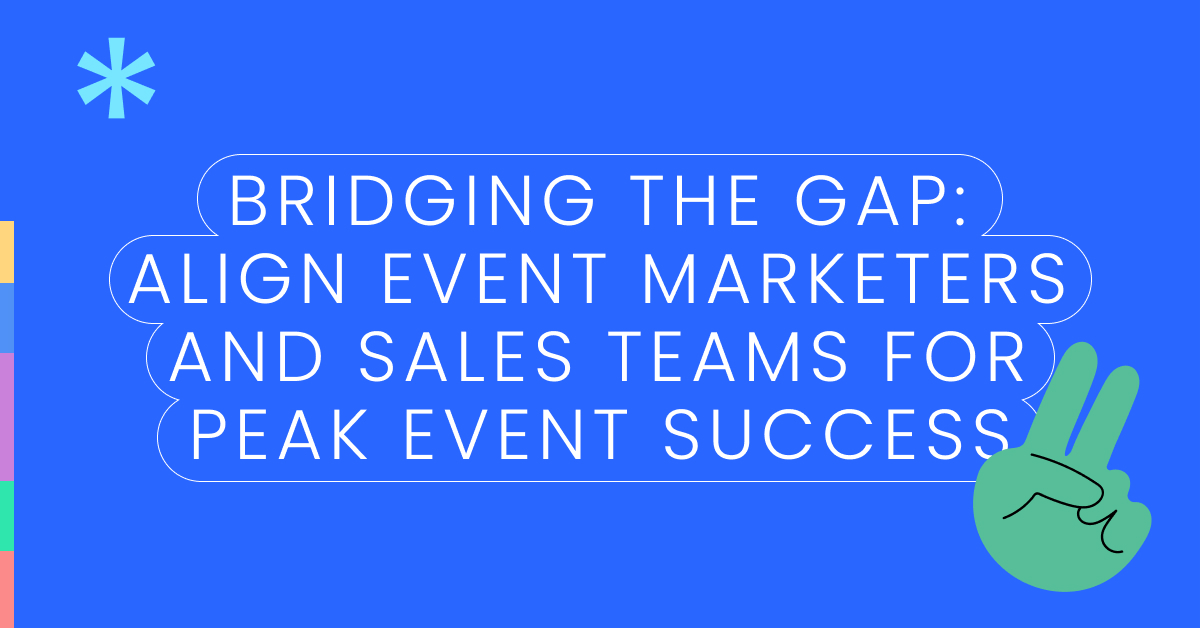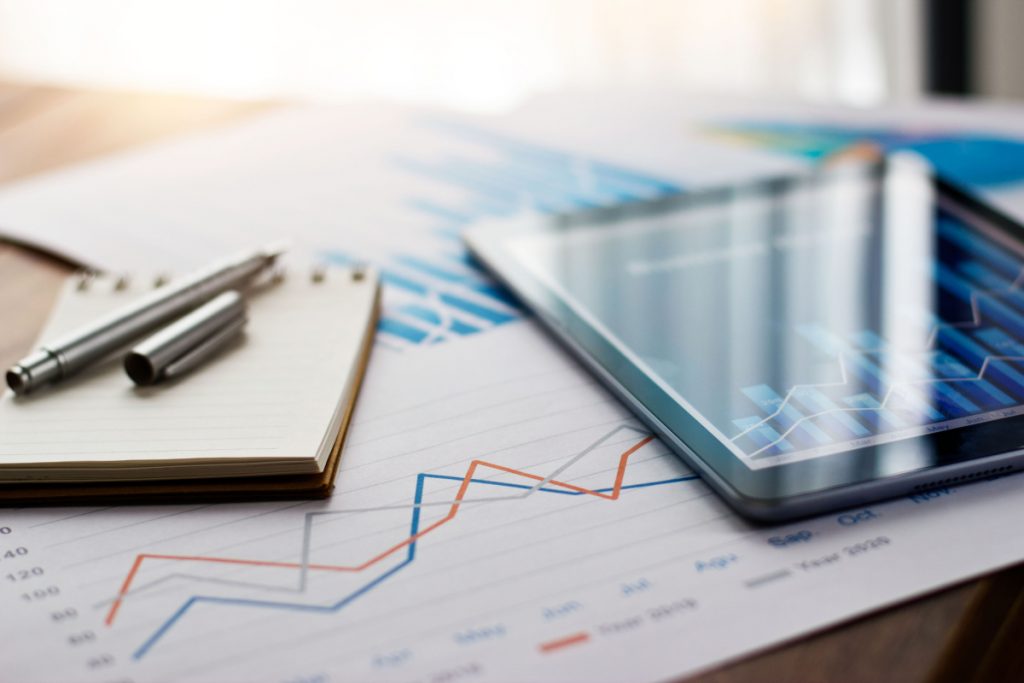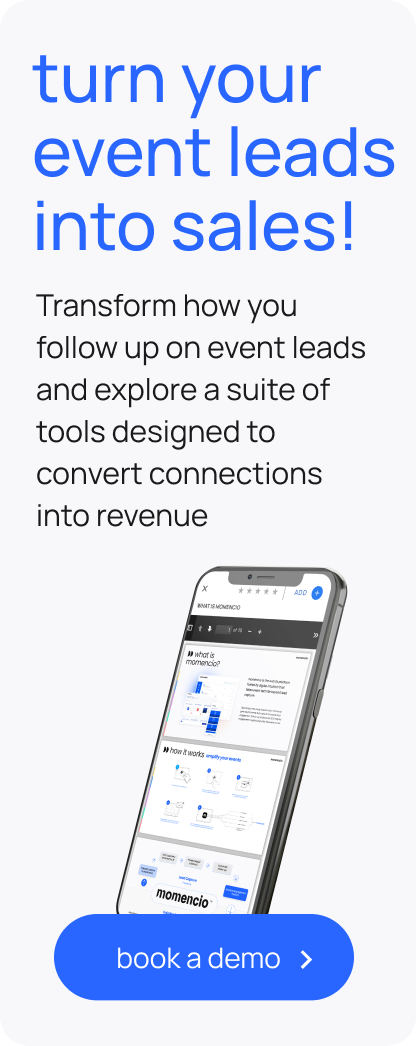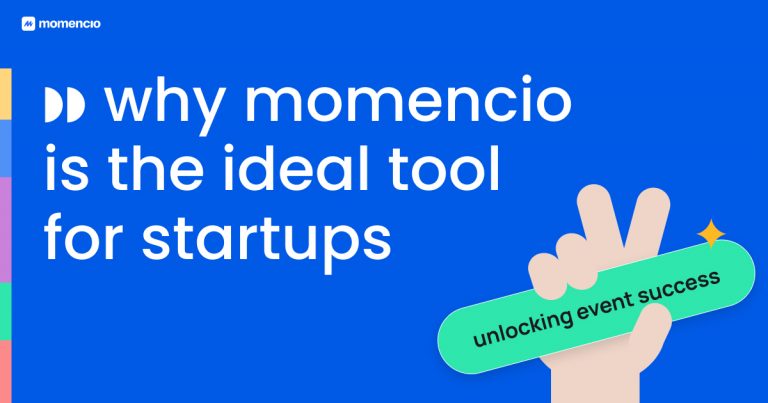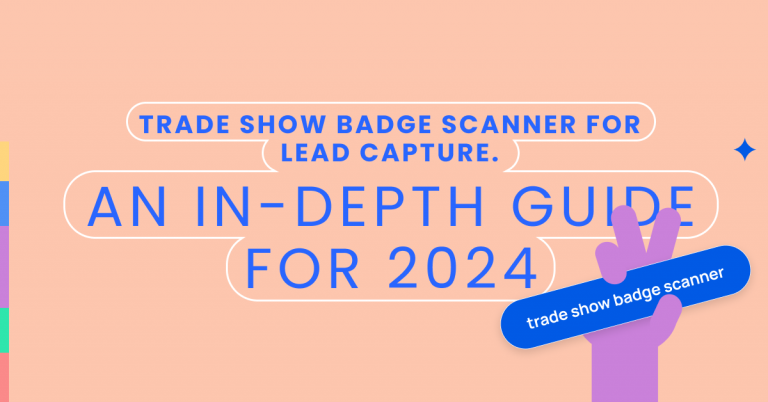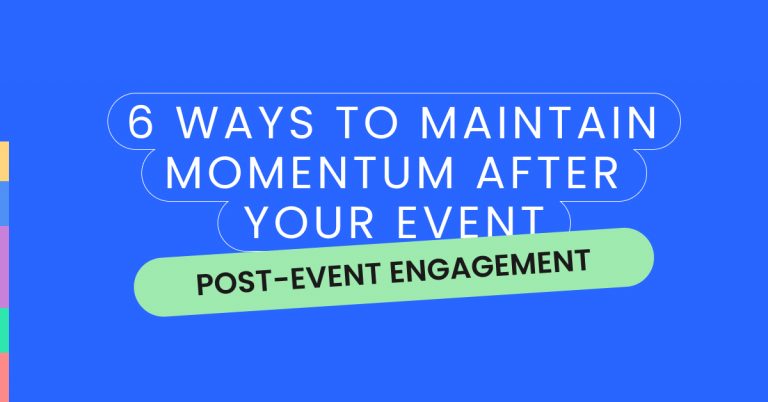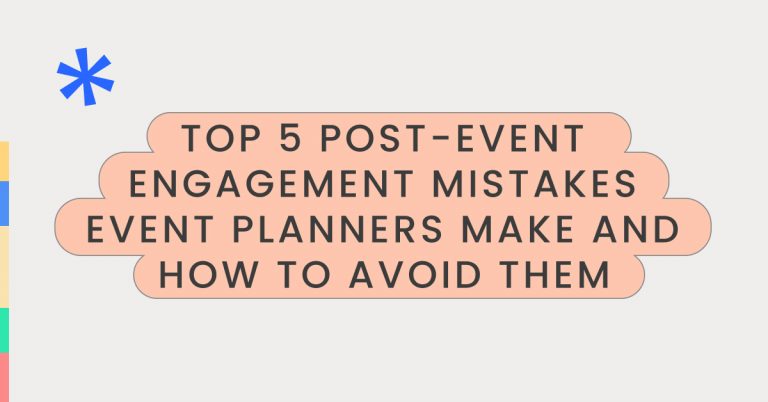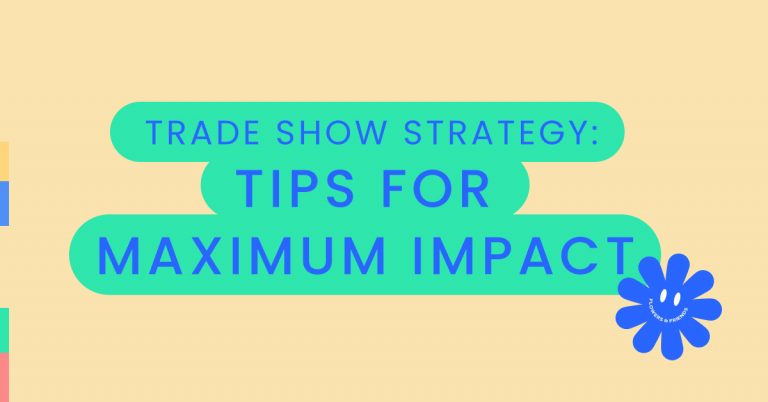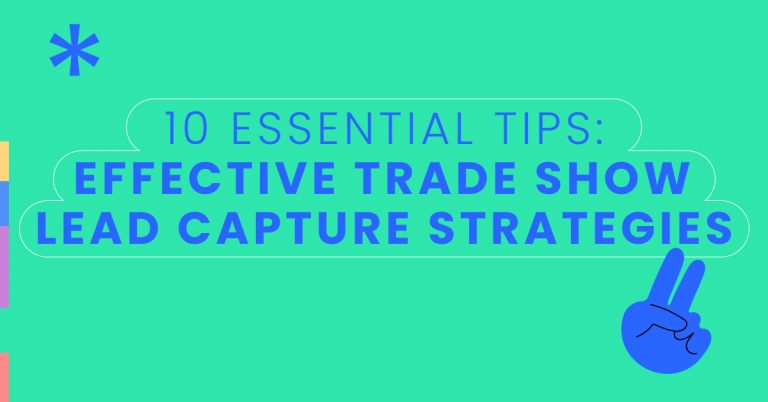Align Event Marketers and Sales: The fusion of event marketing and sales efforts represents a strategic lever capable of catapulting events from mere networking opportunities to pivotal sales catalysts. Amidst an era where the digital and physical realms of marketing converge, the alignment between event marketers and sales teams emerges as a linchpin for event success. A study by Event MB reveals that 95% of marketers believe in-person events have a significant impact on achieving business outcomes, underscoring the potency of well-orchestrated event strategies in the sales cycle. However, achieving synergy between these two dynamic spheres demands a blend of technology, shared objectives, and uninterrupted communication.
This guide embarks on unraveling the blueprint for aligning event marketers and sales teams, setting the stage for unparalleled event success and transformative lead conversion.
The Importance of Aligning Event Marketers and Sales Teams:
The alignment between event marketers and sales teams is not just beneficial—it’s crucial for maximizing the potential of every event. This strategic synchronization can transform events from simple brand visibility exercises into powerful engines for lead generation, nurturing, and conversion. Let’s delve into the myriad benefits of this alignment, which include enhanced lead quality, streamlined conversion paths, and significantly amplified event ROI.
Enhanced Lead Quality
One of the most immediate impacts of aligning event marketing with sales efforts is the marked improvement in the quality of leads generated. When both teams work in harmony, they can share insights and data that refine target audience profiles and tailor event content to attract high-potential prospects. A study by the Content Marketing Institute found that events rank as one of the top three sources of B2B leads, underscoring the importance of strategic alignment in capturing the attention of the right audience. Sales teams can provide event marketers with critical information about customer pain points and preferences, enabling the creation of event experiences that resonate deeply and attract more qualified leads.
Streamlined Conversion Paths
Alignment facilitates the creation of a seamless journey from the initial event touchpoint through to post-event follow-up and conversion. With a unified strategy, the transition of leads from marketing to sales is smooth and efficient, reducing the likelihood of leads falling through the cracks. Technologies like momencio play a pivotal role here, offering platforms where leads captured at events are immediately accessible to sales teams, complete with rich interaction data that inform personalized follow-up strategies. This integration ensures that no time is wasted and that prospects are engaged with the most relevant information, accelerating their journey down the sales funnel.
Amplified Event ROI
The ultimate goal of any marketing activity is to demonstrate a positive return on investment, and events are no exception. Aligning event marketers and sales teams can significantly boost event ROI by ensuring that every aspect of the event—from planning and promotion to execution and follow-up—is optimized for sales success. According to Bizzabo, event marketing demands a considerable portion of B2B marketing budgets, making efficiency and effectiveness in these initiatives paramount. Through strategic alignment, organizations can ensure that events not only generate leads but also effectively convert these leads into sales, thus providing a tangible and measurable impact on the bottom line.
Moreover, aligned teams can leverage real-time data and analytics to make on-the-fly adjustments to event strategies, further maximizing the potential for positive outcomes. Whether it’s shifting focus to more engaged segments of the audience or tweaking messaging to better resonate with attendees, the ability to adapt based on shared insights can make a significant difference in event performance.
Align Event Marketers and Sales: Strategies for Effective Alignment
Aligning event marketers and sales teams is pivotal for optimizing event outcomes and driving sales. Central to this alignment are three core strategies that serve as the foundation for a synergistic relationship between these two dynamic teams. Let’s explore these strategies in detail.
Implement Integrated Technology
In the digital age, technology stands as the backbone of efficient and effective event marketing and sales alignment. Platforms like momencio are at the forefront, offering end-to-end solutions that facilitate seamless data capture, in-depth lead analysis, and streamlined follow-up processes. By utilizing such integrated technology, both event marketers and sales teams can access real-time data on lead behavior, preferences, and engagement levels, enabling a more personalized and informed approach to lead nurturing and conversion.
momencio, for example, simplifies the lead capture process at events through instant badge scanning, ensuring no potential lead is overlooked. The platform then enriches these leads with additional data, offering a comprehensive view that assists sales teams in crafting tailored follow-up strategies. This level of integration ensures that every interaction with a lead is based on the latest insights, significantly increasing the chances of conversion.
Develop Unified Goals and Metrics
The alignment between event marketers and sales teams is further strengthened by establishing shared goals and metrics. This common ground ensures that both teams are not just working together but are also moving in the same direction, driven by unified objectives. Key Performance Indicators (KPIs) such as lead generation numbers, conversion rates, and event ROI serve as quantifiable benchmarks that both teams strive to achieve.
Creating a shared dashboard that tracks these KPIs can foster a sense of collaboration and mutual accountability. This approach ensures that events are not just seen as marketing initiatives but as joint ventures that directly contribute to the organization’s sales objectives. By regularly reviewing these metrics, teams can identify areas of success and pinpoint opportunities for improvement, facilitating continuous optimization of their strategies.
Foster Continuous Communication
The glue that binds integrated technology and unified goals together is continuous communication. Establishing regular touchpoints between event marketers and sales teams ensures that both sides are aligned on expectations, aware of progress, and can swiftly address any challenges that arise. This ongoing dialogue can take many forms, from weekly alignment meetings to real-time messaging channels, and is crucial for maintaining the momentum and adaptability necessary for event success.
One effective method is to designate liaisons or champions within each team who are responsible for ensuring the flow of information and coordinating joint efforts. These individuals can play a pivotal role in bridging any gaps and fostering a culture of openness and collaboration. Additionally, post-event debrief sessions offer a valuable opportunity for both teams to share feedback, discuss outcomes, and plan for future events based on lessons learned.
By embracing these three strategies—implementing integrated technology, developing unified goals and metrics, and fostering continuous communication—event marketers and sales teams can achieve a level of alignment that not only enhances the effectiveness of events but also drives tangible sales results. This synergy not only maximizes the ROI from events but also strengthens the overall marketing and sales functions within an organization.
Align Event Marketers and Sales: Challenges and Solutions
The path to aligning event marketers and sales teams, while laden with potential, is challenging. Key among these are the hurdles of data silos and communication gaps—obstacles that, if left unaddressed, can significantly dampen the effectiveness of collaborative efforts. Recognizing these challenges is the first step towards crafting effective solutions that ensure alignment leads to the desired outcomes of enhanced lead quality, streamlined conversion paths, and amplified event ROI.
Data Silos: The Fragmentation Challenge
Challenge: In many organizations, data silos represent a formidable barrier to effective alignment between event marketers and sales teams. These silos occur when crucial event data and customer insights are confined within departmental boundaries, inaccessible to other teams that could benefit from this information. The result is a fragmented approach where both teams may pursue their objectives with a limited understanding of the customer journey, leading to missed opportunities for engagement and conversion.
Solution: Implementing an integrated CRM system that incorporates event marketing tools, like momencio, offers a practical solution to this challenge. Such platforms ensure that data captured before, during, and after the event is stored in a centralized repository, accessible to both sales and marketing teams. This shared access facilitates a comprehensive view of each lead’s engagement history, preferences, and potential pain points, enabling targeted follow-up strategies and personalized interactions that significantly enhance the chances of conversion.
Communication Gaps: The Synchronization Challenge
Challenge: Even with shared data, the need for regular and effective communication between event marketers and sales teams can hinder alignment. These communication gaps often arise from differing priorities, work rhythms, and even vocabulary, leading to misinterpretations and missed signals about lead readiness or interest level.
Solution: Establishing structured, regular check-ins between teams can bridge these gaps. These meetings should not only review event performance and lead progress but also facilitate a shared understanding of objectives, strategies, and terminology. Additionally, leveraging collaborative tools and platforms that offer real-time notifications and updates about lead activities can ensure both teams are on the same page, even in the fast-paced environment surrounding events.
Bridging the Divide: A Unified Front
The resolution of data silos and communication gaps paves the way for a genuinely unified front where event marketers and sales teams work in concert towards common goals. Embracing technology solutions like momencio ensures seamless data capture and analysis, providing a solid foundation for this alignment. Developing shared KPIs and objectives clarifies the direction and success metrics for both teams, aligning efforts and expectations. Meanwhile, fostering continuous communication ensures adaptability and responsiveness, which are vital in the dynamic landscape of event marketing and sales.
In navigating these challenges and their solutions, organizations can transform potential obstacles into opportunities for strengthening the synergy between event marketing and sales. This enhanced alignment not only maximizes the effectiveness of each event but also turns these opportunities into engines of growth and customer engagement, driving tangible results and significant ROI.
Future Trends in Sales and Event Marketing Synergy
The synergy between sales and event marketing is poised for transformative growth, driven by emerging trends that leverage technology, data analytics, and a deeper understanding of attendee behavior. As we look towards the future, several key developments stand out, promising to redefine how these teams collaborate for maximum impact and efficiency. These trends not only capitalize on the advancements in technology but also reflect a shift towards more personalized, engaging, and data-driven event strategies.
AI-Driven Analytics and Predictive Modeling
Emerging Trend: Artificial intelligence (AI) is revolutionizing the way sales and event marketing teams gather insights and make decisions. AI-driven analytics tools can process vast amounts of data from event interactions, social media engagement, and other touchpoints to identify patterns and predict future attendee behavior. This predictive capability allows for the anticipation of customer needs, preferences, and the likelihood of conversion, enabling more targeted and effective follow-up strategies.
Impact: By integrating AI analytics into their collaboration, sales, and event marketers and sales team can move from reactive to proactive engagement, tailor their approaches to match predicted attendee interests, and optimize their efforts for the highest ROI. This shift towards predictive modeling will enable teams to allocate resources more efficiently, focusing on leads with the highest conversion potential and enhancing personalized engagement strategies.
Enhanced Personalization Through Technology
Emerging Trend: Personalization is set to reach new heights, with technology offering innovative ways to engage attendees in a manner that feels uniquely tailored to them. From personalized event agendas powered by AI recommendations to VR and AR experiences that bring product demonstrations to life, technology is enabling a more immersive and individualized event experience.
Impact: This level of personalization not only elevates the attendee experience but also provides sales and event marketing teams with richer, behavior-based insights. Understanding an attendee’s preferences and interactions at such a granular level aids in crafting follow-up communications and sales strategies that resonate on a personal level, significantly boosting engagement and conversion rates.
Seamless Integration of Virtual and Physical Event Spaces
Emerging Trend: The rise of hybrid events has underscored the need for seamless integration between virtual and physical event spaces. Future trends point towards a more cohesive experience where digital and in-person interactions are not only interconnected but also mutually enriching. Technologies facilitating real-time engagement, such as live polling, virtual networking spaces, and integrated event apps, are becoming indispensable tools for bridging the gap between these two worlds.
Impact: For sales and event marketing teams, the hybrid model expands the scope of engagement opportunities, allowing for a broader reach and the collection of diverse data points across both virtual and physical domains. This integrated approach enhances lead capture and nurturing processes, providing a comprehensive view of each attendee’s journey and preferences, regardless of their mode of participation.
The Rise of Data Privacy and Ethical Engagement
Emerging Trend: As technology advances, so does the emphasis on data privacy and ethical engagement practices. Future trends in event marketing and sales collaboration will increasingly need to navigate the balance between personalized engagement and respecting attendee privacy. This includes transparent data collection policies, consent-based marketing, and secure data handling procedures.
Impact: Adhering to these principles not only ensures compliance with evolving regulations but also builds trust with attendees. For sales and event marketing teams, this means developing strategies that prioritize privacy and consent without compromising the effectiveness of their efforts. Ethical engagement practices will become a competitive advantage, enhancing brand reputation and attendee loyalty.
These emerging trends signal a future where sales and event marketing collaboration is more dynamic, data-driven, and personalized than ever before. By embracing these developments, organizations can ensure that their event strategies remain at the forefront of innovation, delivering unparalleled value to attendees and driving significant business outcomes.
Conclusion
The journey toward aligning event marketers and sales teams reveals a landscape ripe with opportunities for transformative success. From the enhanced lead quality and streamlined conversion paths to the significantly amplified event ROI, the benefits of this strategic alignment are undeniable. As we look to the future, the emerging trends of AI-driven analytics, personalized attendee engagement, and the seamless integration of virtual and physical spaces promise further to elevate the synergy between these two pivotal areas.
This alignment, however, has its challenges. Overcoming data silos and communication gaps requires a concerted effort underpinned by the right technology solutions that facilitate seamless data capture, analysis, and sharing across teams. As we navigate these challenges, the role of technology, particularly platforms like momencio, becomes increasingly central, acting as a bridge between the diverse worlds of event marketing and sales.
In this evolving landscape, the organizations that will thrive are those that recognize the power of strategic alignment and are agile enough to embrace the technological advancements shaping the future of sales and event collaboration. The journey towards this alignment is a journey towards realizing the full potential of every event—a journey towards deeper engagements, more meaningful connections, and, ultimately, unparalleled business growth.
Call to Action
As we stand on the brink of a new era in event marketing and sales collaboration, the question is now whether to align these functions and how to do so most effectively. momencio stands ready as your partner in this journey, offering a comprehensive platform that embodies the power of technology as a unifier.
With momencio, you can leverage cutting-edge features for seamless data capture, real-time analytics, and personalized attendee engagement, all designed to optimize your event marketing and sales strategies. Whether you’re looking to overcome the challenges of data silos, enhance lead quality, or embrace the future trends of AI-driven personalization and hybrid event experiences, momencio provides the tools and insights you need to succeed.
We encourage you to explore how momencio can transform your approach to event marketing and sales collaboration. Discover the power of strategic alignment and technology in driving your events to unprecedented success.
Get momencio today, and turn every event into a cornerstone of your business growth strategy.
FAQs: Align Event Marketers and Sales – Addressing Common Questions
Q1: Why are aligning event marketers and sales teams important? Aligning these teams enhances lead quality, streamlines the conversion path, and amplifies event ROI by ensuring a unified approach to event strategy and execution. This collaboration leads to more personalized attendee experiences and better-targeted follow-up strategies.
Q2: How can technology facilitate the alignment between event marketers and sales teams? Technology, especially platforms like momencio, offers seamless data capture, real-time analytics, and personalized engagement capabilities. It serves as a central repository for all event-related data, ensuring both teams have access to the same insights for informed decision-making and strategy development.
Q3: What are some effective strategies for aligning event marketers and sales teams? Implementing integrated technology, developing unified goals and metrics, and fostering continuous communication are key. These strategies ensure both teams work towards common objectives, leveraging shared data and insights for optimal event and sales performance.
Q4: What challenges might arise during the alignment process, and how can they be overcome? Challenges include data silos and communication gaps. Overcoming these issues involves adopting integrated CRM systems and collaborative tools and establishing regular communication channels to ensure ongoing alignment and data sharing.
Q5: Can alignment impact the overall ROI of events? Absolutely. Strategic alignment between event marketing and sales teams has been shown to increase the ROI of events significantly. This is achieved through improved lead quality, more efficient lead conversion processes, and the ability to measure and optimize strategies based on shared data and insights.
Interesting Facts from Research
- 95% of marketers believe that in-person events have a significant impact on achieving business outcomes. (Source: Event MB)
- Events account for a substantial portion of B2B marketing budgets, with some companies allocating up to 21% of their budget to event marketing. (Source: Bizzabo)
- AI-driven analytics can increase lead conversion rates by up to 30% by providing insights into attendee behavior and preferences. (Source: McKinsey & Company)
- 78% of companies report that integrating sales and marketing operations led to an increase in customer retention rates. (Source: Marketo)
- Companies that excel at lead nurturing through events generate 50% more sales-ready leads at a 33% lower cost. (Source: Invesp)
- Hybrid events are projected to grow by 30% over the next five years, indicating a shift towards more integrated virtual and physical event experiences. (Source: Grand View Research)
